Motorola Droid X: Thoroughly Reviewed
by Brian Klug on July 20, 2010 4:27 PM EST- Posted in
- Smartphones
- Motorola Droid X
- OMAP
- Mobile
Camera
The X, like the EVO and Incredible, packs an 8 megapixel Omnivision camera SoC, most likely the OmniVision OV8810 (same as the EVO and Incredible) with 1.4 µm square pixels. This sensor has a reported sensitivity of 650 mV/lux-sec, and is likewise backside illuminated. For comparison, the iPhone 4’s 5 megapixel OV5650 SoC has a sensitivity of 1300 mV/lux-sec and pixel sizes 1.75 µm square.
Sensitivity in this case refers to just how much voltage a pixel creates per 1 lux-sec (one lux of light for one second) of exposure. Thus, more voltage is better and results in higher SNR, and less noise on the image.
If you recall back to our iPhone 4 piece, I talked a lot about why backside illumination is relevant as pixel sizes continue to shrink. Quantum efficiency (sensitivity) is one critical reason, but the other is quantum blurring negatively affecting image contrast (MTF). If you’re interested, you can read more here.
Camera Interface
Details of the camera SoC aside, the X foregoes the typical Android camera interface and instead brings its own. It’s different than the one used on the original Droid, and not like HTC’s interface.
On the right are some quick access buttons for scenes, effects, flash, and switching to video. Press menu, and you’ll get picture modes, tags, and settings. Confused yet as to what the difference between scenes, effects, and modes are?
Scenes allows you to set some quick shooting scenarios that the camera will hopefully adjust for. There’s auto, portrait, landcape, sport, night portrait, sunset, macro, and steady shot. I left the camera on auto for all of the test shots. Effects lets you apply filters to the images, such as black and white, negative, sepia, solarize, red green or blue tint, or normal if you’re feeling generic. Flash as expected comes with auto, on, and off modes.
In the top left, you can tap on a tag symbol and toggle GPS assisted location tagging, or custom tags. Hit up settings, and you can change the picture resolution between full 8 MP, 6 MP widescreen, 5 MP medium, and small 3 or 2 MP presets. There also are settings for ISO equivalent sensitivity and exposure. The camera also promises face detection for autofocus, more on that later. The volume buttons control digital zoom.
I mentioned earlier that the X got an OTA update about midway through my time with it. One of the things it addressed was a camera complaint I had begun documenting but is obviously irrelevant now. Before the OTA update, the image preview was higher resolution, but white balance and other color correction effects didn’t show up in the live preview. In effect, the snapped photo was often an entirely different temperature, and looked entirely different. Since the update, Motorola has made the live preview accurately reflect the color temperature of the captured photo, at the cost of a sizable chunk of resolution.
It’s hard to describe how the preview looks now, but it’s no longer of native resolution on the screen, instead appearing slightly blurry and of lower resolution. Viewing the captured photo shows the native quality, but the preview and live view aren’t how the used to be. I took side by side photos of the same subject with an EVO, but even there it's difficult to really see how much the preview differs - either way, it's there. It just doesn't look as good.
Camera launch is between 3-4 seconds now, another of the things the OTA update addressed. It’s relatively speedy but not instantaneous, though none of the smartphone camera launches are. Motorola again uses a colored, two-position dedicated button for shutter control.


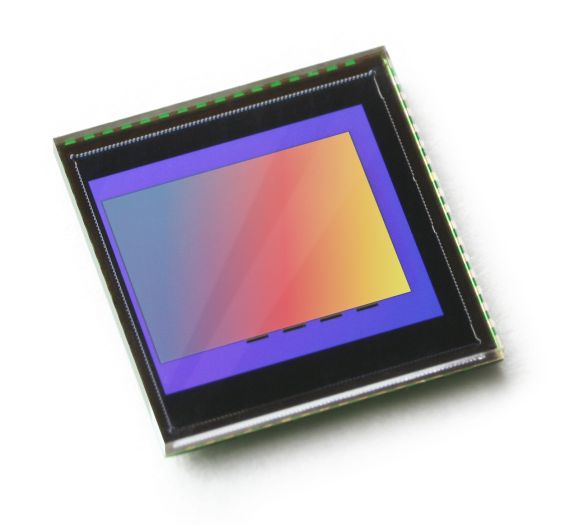
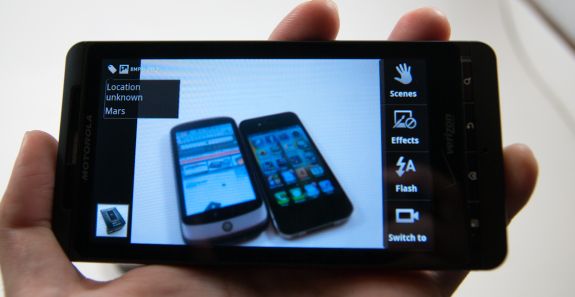
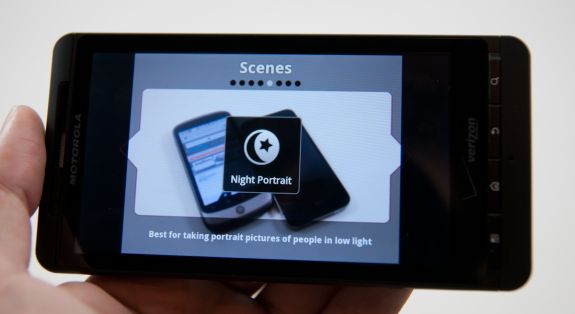
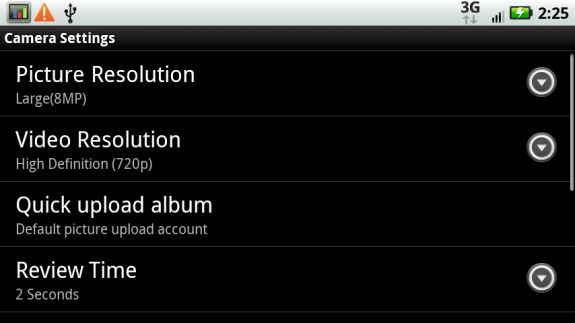
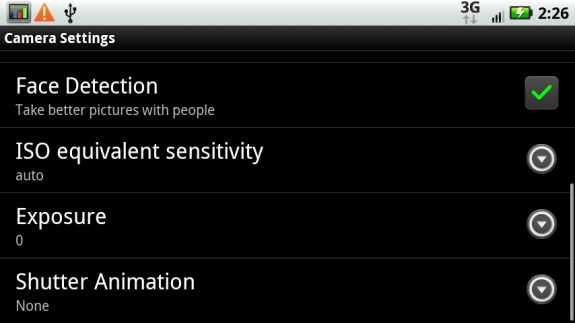
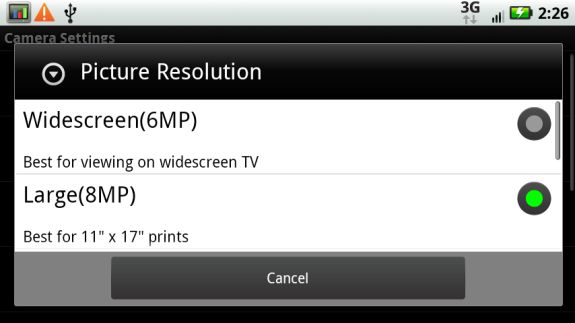
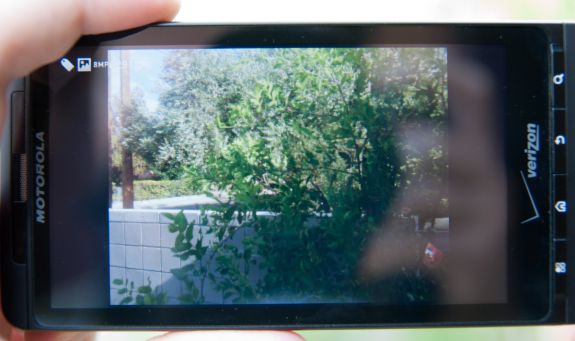








89 Comments
View All Comments
homebredcorgi - Tuesday, July 20, 2010 - link
Who do we have to blame for the “Droid” moniker? Verizon or Motorola?I have a Nexus One and continually get asked, “Is that a Droid?” or “Does that run Droid?” to which I usually reply yes and let sleeping dogs lie…but seriously, why name it so similar to the operating system? And then why make “Droid” a series of phones if your first phone is just known simply as “Droid”?! At least call it the "Droid One" or something to differentiate from the series of phones....
So now we have the Droid, Droid Eris, Droid X, and will soon have the Droid 2 which are all phones in the Droid series, all running on various builds of Android. Yeesh. Could they have made that any more confusing?
All in all, the Droid X looks very nice. I personally think the original Droid had all the flair of a TI-82 calculator (ugly as sin in a blocky retro way), but the Droid X seems to have modernized its looks. Still not sure if I would want a phone that large though….
metafor - Tuesday, July 20, 2010 - link
Verizon owns the rights to the "Droid" trademark from Star Wars. So they decided to capitalize on that and name their whole line of Android phones "Droids".I think it's kinda cheezy but hey, it's selling and is something that people can focus on. With the army of phones coming out every week, it's difficult for the average person to keep up. It helps if they can just go to a store and ask for a Droid.
strikeback03 - Tuesday, July 27, 2010 - link
Actually they have only been using Droid on the high-end phones, the Devour and Ally were not Droids.There is also rumor of a special edition Droid 2 coming with R2-D2 on the battery cover...
lewchenko74 - Tuesday, July 20, 2010 - link
The best, most comprehensive review of the Droid X Ive read so far. Thank you.Just got to wait until it arrives in the UK unlocked now, but personally I think Im going to get the Droid 2 instead with the keyboard.
I am amazed at the pace the smartphone market is moving at. Im 1yr into a 2yr contract with a HTC Hero. It feels like an antique! These 2yr contracts really are a ball and chain.
It also seems like HTC is starting to lag behind Samsung and Moto now in terms of processor and features. Sense also seems a little 'old' compared to other UI layers (or maybe thats just me).
Disappointed that it only runs Android 2.1 when 2.2 is now out though.... That would be like Apple releasing iPhone4 running OS3.2 whilst saying OS4 is out there too but not quite available yet! (I guess Apple actually did that though with the iPad ;-) )
mvmorr01 - Tuesday, July 20, 2010 - link
What app are you using for those CPU utilization graphs? I did a quick search and couldn't find it in the market.Brian Klug - Tuesday, July 20, 2010 - link
It's an application called "SystemPanel" which I found a while back. If you turn logging on, it'll give you some very cool graphs of battery use over time and CPU utilization over days even. Produces some very cool results when I do battery life testing.-Brian
529th - Tuesday, July 20, 2010 - link
First of all I want to say I love mine! :) Bought it the day it came out.Wow what a great review!!!
I didn't know you could run benchmarks on a phone! Linpack!?? WOW awesome!
I can't wait till Froyo! :)
Thanks again chief!
<3 Anandtech reviews!
WaltFrench - Saturday, July 24, 2010 - link
Linpack is a 90s-era benchmark that performs a specific matrix solution. As much as possible, all floating point adds and muls.I've tried in other forums to find an app, prior to 6/1/2010, that actually uses Gaussian elimination with partial pivoting. The particular method works best to find complex patterns within large data sets; that's great for my statistical investment models and for a lot of other stuff. It's strongly suggestive of performance on weather simulations, quantum chemistry, etc., stuff that no sane person would attempt (today) on a smartphone.
Others claim Linpack scores around 40 on overclocked ARM chips with Froyo (the JITting being fabulously helpful for highly repetitive benchmark code). I got ~35 on my iPhone. These scores are ~ 13X–16X what the Linpack author quoted long ago for his 486 (/487, I presume).
I don't know a lot about graphics but presume 3D work that calls for lots of floating point Add/Mul work would get routed to the GPU, so I think these scores are of extremely limited relevance to any smartphone app I can envision.
vshin - Tuesday, July 20, 2010 - link
Where are the antenna attenuation tests? No weak spots?Brian Klug - Tuesday, July 20, 2010 - link
There's definitely attenuation tests in there, and weak spots. The bottom of the phone as expected causes a 15 dB drop. It's on page 14: http://www.anandtech.com/show/3826/motorola-droid-...-Brian